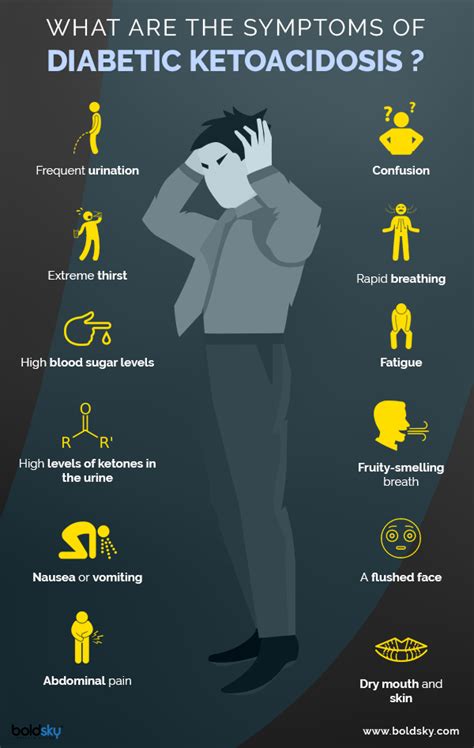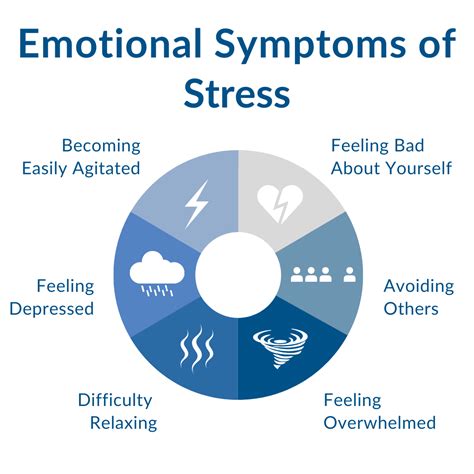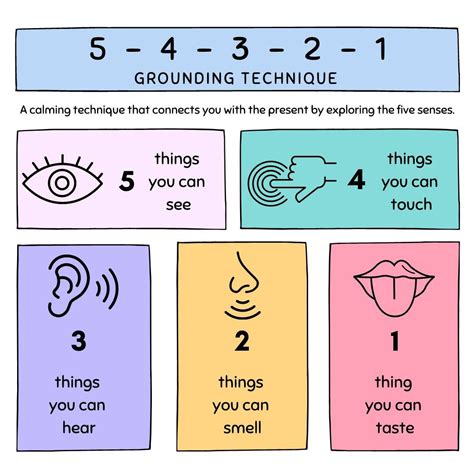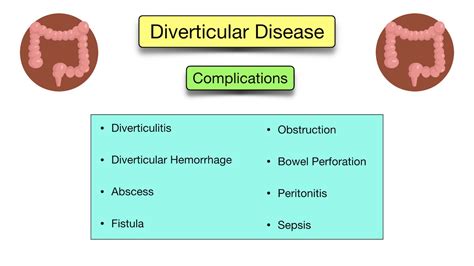Intro
Discover the 7 DKA symptoms, including hyperglycemia, ketoacidosis, and dehydration, to recognize diabetic ketoacidosis warning signs and seek timely medical help, managing blood sugar levels and preventing complications.
Diabetic ketoacidosis, commonly referred to as DKA, is a serious complication of diabetes that occurs when the body produces high levels of blood acids called ketones. This condition arises when the body cannot produce enough insulin, a hormone that regulates blood sugar levels. As a result, the body starts breaking down fat for energy, producing ketones in the process. Recognizing the symptoms of DKA is crucial for prompt medical intervention. The importance of understanding these symptoms cannot be overstated, as early detection can significantly improve outcomes for individuals with diabetes.
The symptoms of DKA can vary in severity and may develop rapidly over a few hours or slowly over several days. It is essential for individuals with diabetes, as well as their family members and caregivers, to be aware of these symptoms to ensure timely medical attention. The consequences of untreated DKA can be severe, including coma and even death. Therefore, education on DKA symptoms is a critical component of diabetes management.
Understanding DKA symptoms is also vital for preventing the condition from occurring in the first place. By recognizing the early signs of DKA, individuals can take proactive steps to manage their diabetes more effectively, reducing the risk of this serious complication. Moreover, awareness of DKA symptoms can facilitate better communication between patients and healthcare providers, leading to more effective treatment plans and improved health outcomes.
Introduction to DKA Symptoms

DKA symptoms can be categorized into several key areas, including physical symptoms, emotional changes, and biochemical indicators. Physical symptoms are often the most noticeable and can include excessive thirst and urination, nausea and vomiting, abdominal pain, and fatigue. Emotional changes may also occur, such as feeling confused or disoriented. Biochemical indicators, such as high blood glucose levels and the presence of ketones in the urine or blood, are critical for diagnosing DKA.
Physical Symptoms of DKA
Physical symptoms are typically the first signs of DKA that individuals notice. These can include: - Excessive thirst and urination: As the body tries to flush out the excess glucose, individuals may experience polyuria (frequent urination) and polydipsia (excessive thirst). - Nausea and vomiting: The presence of ketones can cause stomach upset, leading to nausea and vomiting. - Abdominal pain: Some individuals may experience abdominal pain, which can be severe in some cases. - Fatigue: The lack of insulin and the buildup of ketones can cause feelings of weakness and fatigue. - Dry mouth: Decreased saliva production can lead to dry mouth. - Flushed skin: Individuals may notice that their skin is warm and dry to the touch. - Rapid breathing: Deep, rapid breathing is a common symptom as the body tries to blow off excess ketones.Emotional and Psychological Symptoms of DKA

In addition to physical symptoms, individuals with DKA may also experience emotional and psychological changes. These can include:
- Confusion: High levels of ketones can cause confusion, disorientation, and decreased consciousness.
- Irritability: Individuals may feel irritable or restless due to the discomfort and stress caused by DKA.
- Anxiety: The onset of DKA can be frightening, leading to feelings of anxiety.
- Loss of appetite: Nausea and abdominal pain can cause a decrease in appetite.
Biochemical Indicators of DKA
Biochemical indicators are critical for the diagnosis of DKA. These include: - High blood glucose levels: Typically above 250 mg/dL. - Presence of ketones: Ketones can be detected in the urine or blood using special test strips. - Acidic blood pH: A blood pH below 7.3 indicates acidosis. - Elevated anion gap: This is a measure of the difference between positively charged ions (such as sodium) and negatively charged ions (such as chloride and bicarbonate) in the blood.Treatment and Management of DKA

The treatment of DKA involves several components, including:
- Fluid replacement: To replace lost fluids and electrolytes.
- Insulin therapy: To lower blood glucose levels and suppress ketone production.
- Electrolyte replacement: To correct imbalances of essential electrolytes like potassium, sodium, and chloride.
- Monitoring: Close monitoring of blood glucose, ketone levels, and electrolyte balance is crucial.
Prevention of DKA
Preventing DKA is a key aspect of diabetes management. Strategies for prevention include: - Regular monitoring of blood glucose levels. - Adherence to insulin therapy and medication regimens. - Maintaining a healthy diet and staying hydrated. - Avoiding situations that can trigger DKA, such as infections or not taking diabetes medication as prescribed.Complications of Untreated DKA

Untreated DKA can lead to serious complications, including:
- Cerebral edema: Swelling of the brain that can be life-threatening.
- Respiratory failure: Requiring mechanical ventilation.
- Cardiac arrest: Due to severe electrolyte imbalances and acidosis.
- Coma: Decreased consciousness that can progress to coma.
- Death: If left untreated, DKA can be fatal.
Importance of Early Detection
Early detection of DKA symptoms is critical for effective management and prevention of complications. Individuals with diabetes should be aware of the signs of DKA and seek medical attention immediately if they experience any of these symptoms. Healthcare providers play a crucial role in educating patients about DKA and its management, emphasizing the importance of regular monitoring and adherence to treatment plans.Conclusion and Next Steps

In conclusion, understanding the symptoms of DKA is vital for individuals with diabetes and their caregivers. Prompt recognition and management of DKA can significantly improve health outcomes and prevent serious complications. By staying informed and proactive in managing diabetes, individuals can lead healthier, more fulfilling lives.
We invite you to share your experiences or questions about DKA symptoms in the comments below. Your insights can help others better understand and manage this critical aspect of diabetes care. Furthermore, if you found this information helpful, please consider sharing it with others who may benefit from knowing more about DKA symptoms and management.
What are the most common symptoms of DKA?
+The most common symptoms of DKA include excessive thirst and urination, nausea and vomiting, abdominal pain, fatigue, and confusion. Early recognition of these symptoms is crucial for prompt medical intervention.
How is DKA diagnosed?
+DKA is diagnosed based on symptoms, physical examination, and laboratory tests that measure blood glucose levels, ketone levels, and electrolyte balance. The presence of high blood glucose, ketones, and acidosis confirms the diagnosis of DKA.
Can DKA be prevented?
+Yes, DKA can be prevented by adhering to diabetes treatment plans, monitoring blood glucose levels regularly, maintaining a healthy diet, staying hydrated, and avoiding triggers such as infections. Early detection and management of diabetes complications are also key to preventing DKA.
